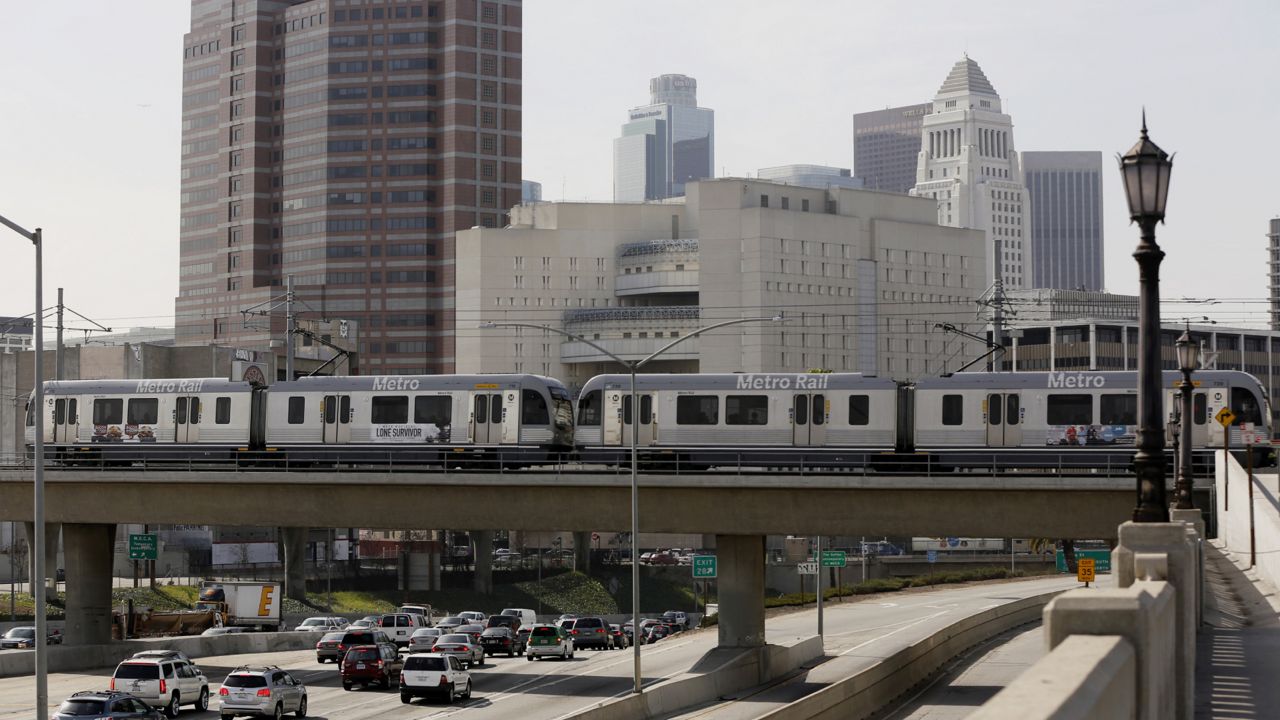Ridership on Metro’s buses and trains continues to be about half what it was before COVID, but the nation’s second-largest public transit agency is working to reinvent itself as Angelenos’ mobility option of first choice. During its annual state of the agency event Wednesday, Metro’s new CEO Stephanie Wiggins announced several new initiatives to cultivate ridership and improve service.
“The more outstanding a person’s experience is with our system, the more likely they will be to ride again and again,” said Wiggins, who took over as Metro CEO last month. “One of my goals is for everyone, beginning with young people, to choose Metro as their first option when considering their mode for transportation.”
It will be a tall order. The number of trips people took on Metro's buses and trains dropped 70% from its pre-pandemic average of 1.2 million daily trips during COVID and is only back to about 500,000. Due to budget issues, the workhorse of the system — bus service — was cut 29%, and rail service was cut 14%, last September. While both are set to be fully restored by fall, hiring bus operators has been problematic due to the current labor shortage.
In her first major appearance since taking over as CEO, Wiggins said Metro's "driving principle will be to place people at the center of everything we do. I see this as a core value for LA Metro, and a touchstone to remind us why we do what we do every day."
Young people, in particular, are key to her plan.
Just 66,000, or 4.7%, of the county’s K-12 students had Metro TAP cards before COVID, Wiggins said. Noting that student riders are not represented on any of the agency’s advisory committees and have “untapped potential,” she announced the establishment of Metro’s first-ever youth council to elevate their perspectives and get “their input to make this a system they want to ride and are personally invested in.”
Wiggins made the announcement as the Metro board weighs approval of the agency’s fareless initiative, which would provide free fares for K-12 students and community college students starting in August.
To entice more riders of all kinds, Wiggins said Metro is preparing to restore service to pre-pandemic levels by this fall. It is currently implementing the first major overhaul of its bus system in 25 years, including 27 miles of bus-only lanes in the city of Los Angeles, as well as the building or extension of 15 bus rapid transit lines.
To improve the experience for riders once they’ve boarded a bus or train, Metro is building on the Understanding How Women Travel report it issued in 2019 with a new gender action plan that will be released within the current fiscal year.
“The main goal of the gender action plan is to ensure that the agency’s policies, programs and activities include a gender perspective and promote the considerations of gender issues at all levels,” Wiggins said, adding that on Tuesday, the agency signed its support to Build Out California, the first industry association to promote the development of LGBTQ-allied businesses in architecture, engineering and construction.
Wiggins also said that Metro would no longer rely on law enforcement as the primary means of dealing with the unhoused on its buses and trains. Instead, she said Metro would take a community-based approach, working with the city and social services. She also promised to “fix” the problem of Metro being too difficult to use for disabled riders.
“Equity is something that Metro has focused on for a long time, but it’s also an issue that requires us to constantly evolve,” Wiggins said during an event that marked the transition of Metro Board Chair from LA Mayor Eric Garcetti to LA County Supervisor Hilda Solis. It is the first time the agency’s top two positions have been held by women, both of whom are people of color.



